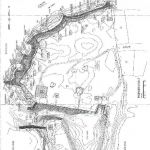Harkers Point, Harkers Island
Description
North Carolina enjoys a robust recreational and commercial fishing industry. More than 65% of the fish species caught in NC by recreational fisherman are dependent upon the state's 2.1 million acres of estuaries at some point in their life cycles. Waterfront property owners often destroy these vital and productive areas when they stabilize their shorelines to protect against erosion. Long and short-term negative impacts associated with walled bulkheads are well understood and include disruption of the natural equilibrium along the shorelines, increased erosion adjacent to the walls, loss of critical wetlands and near-shore fishery habitat, and leaching of toxic chemicals used in wood treatment. Reversal of the current trends in the use of bulkheading to control shoreline erosion is critical to the protection of North Carolina's remaining estuarine habitats and water quality.
The NOAA Community-based Restoration Program and Restore America's Estuaries have joined together with the North Carolina Coastal Federation (the federation) to fund natural shoreline restoration demonstration projects at several sites. The shoreline restoration projects will promote natural alternatives to bulkheading. The federation received a bulk permit for 30 shoreline restoration projects. These projects serve to improve the public's understanding of the need for restoration and of the tools to protect and restore coastal habitat. At a private landholder's residence in Harker's Island, NC, the federation conducted a restoration project as part of the Shoreline Restoration Cost Share Program. This site on Bogue Sound is an area of high wave intensity and vulnerable to storms. First, CAMA permit applications were submitted on behalf of adjoining property owners and field surveys and designs were prepared. The stone sill will be constructed along the entire 400-foot shoreline during the summer of 2004.
Funding
Funding agencies and partners for this project include NOAA, NCCF, and RCDB Funding Mechanism.
-7e61d80dfcfd7acafbe87e4994d2e99f.jpg)
-a71d16d1d9ae0744eb2121858fde544e.JPG)

-39eae6678433b9169b17bb969e2459cf.JPG)
-ef39bf6ddbf722152660ed8b7eee92f4.JPG)
-5ca8e3a562892a77990c149759242a97.JPG)